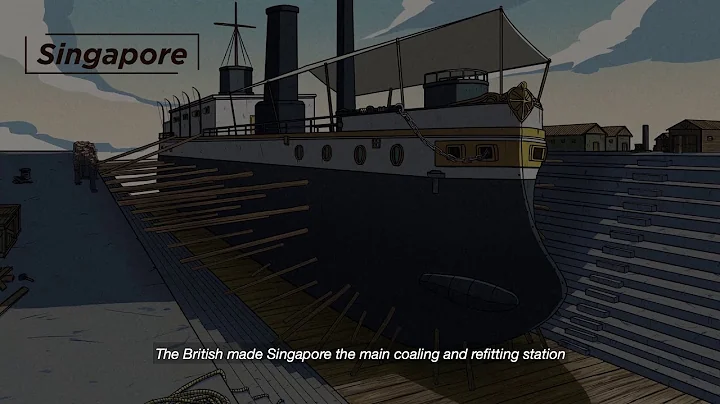Czech and Slovak once served as the industrial backbone of the Austro-Hungarian Empire and were the most important military industrial base of the Austro-Hungarian Empire. After World War II, during the Cold War of the 1970s, Czechoslovakia 's Vodochody ( Aero Vodochody) airline 's L-39C "Albatross" high subsonic jet Medium/high-level training aircraft, due to their low cost, simple structure, high reliability, easy operation, and easy repair and maintenance, make them the most popular among the air forces of the Soviet Union and the entire Warsaw Pact countries, and even Iraq, Syria and Libya, etc. The main medium/high-level trainer aircraft equipped by the National Air Force.

L-39C "Albatross" three-view
By 1993, the L-39 series of mid/high-level trainer aircraft once accounted for as much as 80% of the total share of Czech arms exports that year! Today, the L-39C medium/high-level trainer aircraft can still be seen at major air shows and defense exhibitions, but this time it is shown to the world as a dedicated performance aircraft for the "Breitling" aerobatic display team. . The "Breitling" aerobatic team is also the only civilian jet aerobatic team so far.

The "Breitling" aerobatic team equipped with the L-39C type
The development and birth of the L-39C type
The predecessor of Vodochodi Aviation in 1964, Stredusesk Strogelny Aviation Factory ( The factory was renamed Vodochodi Aviation only in 1965 and established the C-39 project plan to replace the old L-29 "Dolphin" trainer aircraft, and then established a new aircraft designed by Jan Flcek Division, headed by the C-39 Project Program Engineering Team.
Designer Jan. Flcek proposed a tandem two-seater single-engine jet trainer. This trainer can carry weapons loads under the wings, and can also be sold to Warsaw Pact countries and become a member of China. It is the main trainer aircraft for the National Air Force to train fighter pilots. After several years of R&D and design work, on November 4, 1969, the L-39 "Prototype X-02" prototype aircraft with fuselage number 3902 successfully made its first flight. This prototype aircraft was mainly silver-white with red accents. Livery, it was piloted by a test pilot of Wodo Jodi Airlines on its first flight .

L-39 "Prototype The production of the training aircraft began, and the mass-produced version was named the L-39C "Albatross". In 1972, the Warsaw Pact countries officially identified the L-39C as the preferred trainer aircraft for their air forces. In 1974, the first L-39C medium/high-level trainer aircraft was officially installed in the Czechoslovak Air Force.
Design and technical performance
As a mid/high-level trainer aircraft, the L-39C adopts a tandem two-seat + single-engine lower wing, plus a single vertical tail and horizontal tail aerodynamic layout design. The low-wing model is NACA 64A012, with a wing area of 18.8 square meters. The low-wing design makes the L-39C model have excellent flexibility. The left and right wing tips are also equipped with non-detachable 100-liter wings. Tip fuel tank.

The soaring L-39C medium/high-level trainer aircraft
Because the L-39C type can take off and land on a simple field airport runway, there are air inlets on both sides of the rear fuselage with semicircular air inlets. , the air intake is separated from the fuselage by a splitter plate. The higher air inlets on both sides can prevent the front intake fan of the turbofan engine from inhaling gravel and causing damage to the turbofan engine blades during takeoff, or even causing the engine to be scrapped.
In terms of performance, the L-39C model has a body length of 12.13 meters and a wingspan of 9.46 meters and a body height of 4.77 meters and an empty weight of 3.45 tons and a maximum takeoff weight of 4.7 tons. The two external hardpoints under the left and right wings can carry the total weight; 284kg payload. Normal flight speed; Mach 0.6, maximum flight speed; Mach 0.8, overload; -4 to +8G, maximum range; 1100 kilometers, ceiling; 11 kilometers.

L-39C front close-up
power system uses an AI-25TL medium bypass ratio small thrust turbofan engine developed and designed by Ivchenko-Progress Design Bureau. The engine prototype was tested on the ground for the first time in 1966. The engine length: 3.36 meters, diameter: 0.612 meters, weight: 0.35 tons, normal thrust; 0.515 tons (5.05 kilonewtons), maximum thrust; 1.72 tons (16.9 kilonewtons), thrust-to-weight ratio: 4.9; 1.

AI-25TL turbofan engine
structure adopts a "3-3-" of 3-stage intake fan, 3-stage low-pressure compressor, 9-stage high-pressure compressor and annular combustion chamber, 1-stage high-pressure turbofan and 2-stage low-pressure turbine. 9-1-2” design structure, it is worth noting that the medium-pressure and high-pressure compressors are all made of OT4-1 titanium alloy.
 htmlStatic close-up of the 09-level high-pressure compressor
htmlStatic close-up of the 09-level high-pressure compressor
L-39C and the "Breitling" performance team
The "Breitling" aerobatic display team was formerly the "Apache" aerobatic display team established in 1982. Although the performance team is private in nature, But the members are all retired pilots of the French Air Force. In 2003, Breitling, a well-known Swiss watchmaking company, began to exclusively sponsor the "Apache" aerobatic team. Later, it was renamed the "Breitling" aerobatic team and continues to this day. It is reported that the team can compete in the world every year Within the scope, it has participated in 50 aerobatic performances, and currently has 9 L-39C intermediate/advanced trainer aircraft as performance aircraft (No. 0-8).

The members of the “Breitling” performance team are all retired pilots




![[SUB]陸81192延燒 CIA搞艾爾段? 新聞大白話@tvbstalk 20240401 (字幕版) - DayDayNews](https://i.ytimg.com/vi/4BABeJlxn6U/hq720.jpg?sqp=-oaymwEcCNAFEJQDSFXyq4qpAw4IARUAAIhCGAFwAcABBg==&rs=AOn4CLDoG_LaeUhaoEUJhm5EsWVHYppNQQ)

![[SUB]陸8千噸艦到金廈 蘋果怕了比亞迪? 新聞大白話@tvbstalk 20240229 (字幕版) - DayDayNews](https://i.ytimg.com/vi/Fu76kxU5wsk/hq720.jpg?sqp=-oaymwEcCNAFEJQDSFXyq4qpAw4IARUAAIhCGAFwAcABBg==&rs=AOn4CLAOvQ07gaAsNi2q02lIC5TcC-aIFw)

![[SUB]陸抓CIA洩殲35?福建艦隱身機曝 新聞大白話@tvbstalk 20231231 (字幕版) - DayDayNews](https://i.ytimg.com/vi/bnEumet94Fw/hq720.jpg?sqp=-oaymwEcCNAFEJQDSFXyq4qpAw4IARUAAIhCGAFwAcABBg==&rs=AOn4CLA_0CpVPOK6FTFR2HauNR44qd0eVg)


